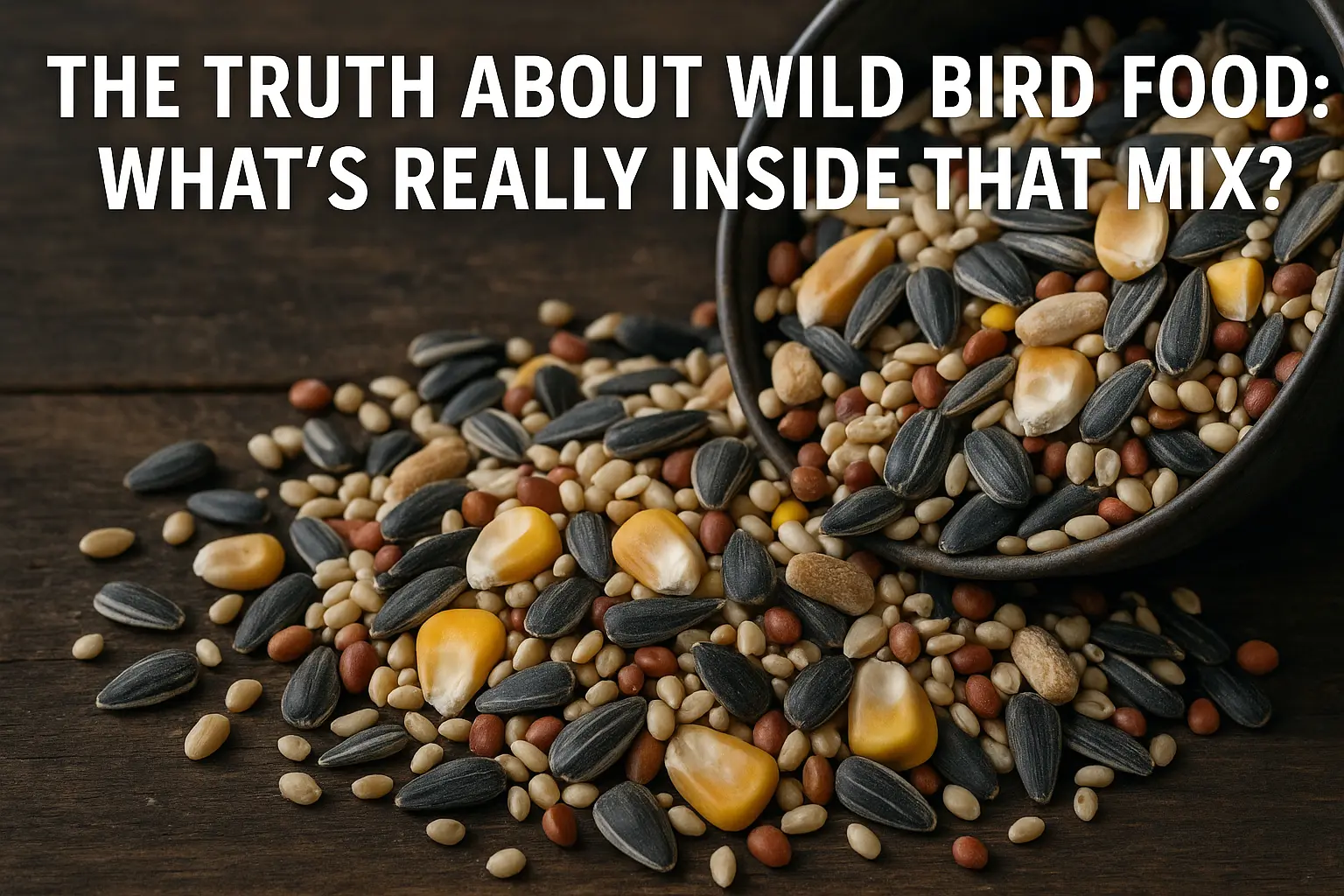Wild bird food isn’t just a random blend of seeds—it’s a carefully crafted mix designed to attract specific types of birds while supporting their nutrition throughout the seasons. Whether you’re sprinkling seed in your backyard feeder or stocking up for the winter months, knowing what’s really inside your wild bird food can make a huge difference in the health, color, and energy of your feathered visitors. In this guide, we’ll break down the most common ingredients found in Wild Bird Food, how they benefit birds, and what to avoid when choosing the right wild bird seed or wild bird feed.
What Is Wild Bird Food, Really?
At its core, Wild Bird Food is a mixture of seeds, grains, nuts, and sometimes dried fruits or suet. These ingredients are selected to provide wild birds with:
- High energy
- Nutrient-dense meals
- Variety based on bird species
- Seasonal support (e.g., fat in winter, protein in spring)
But not all wild bird mixes are created equal.
Common Ingredients in Wild Bird Food (And What They Do)
Here’s a closer look at what you’re likely to find in your average bag of wild bird food:
1. Black Oil Sunflower Seeds
The most popular seed for many species. Rich in fat, perfect for energy and shiny feathers.
2. White Proso Millet
Loved by sparrows, juncos, and doves. Small and easy to digest.
3. Safflower Seeds
A favorite of cardinals. Has a bitter taste to deter squirrels.
4. Cracked Corn
High in carbs and a hit with ground-feeding birds like quails and pigeons.
5. Peanuts (Shelled or Pieces)
Packed with protein and fat. Attracts woodpeckers, jays, and chickadees.
6. Nyjer (Thistle) Seeds
Extremely tiny but rich in oil. Best for finches and goldfinches.
7. Suet Pellets or Fat Nuggets
Often added for winter blends. Excellent energy source in cold weather.
Ingredients to Watch Out For
Not all wild bird feed is created with quality in mind. Avoid mixes with:
- Filler grains like wheat, red millet, or milo (which many birds ignore)
- Colored or dyed seeds (unnatural and unhealthy)
- Too much cracked corn, which attracts unwanted pests
Always read the label—if the first ingredient is milo, it’s likely a low-quality mix.
Matching the Right Wild Bird Seed to the Right Bird
Different birds prefer different seeds. Matching your wild birds food to the species in your area ensures less waste and more sightings.
| Bird Type | Preferred Seed |
| Cardinals | Black oil sunflower, safflower |
| Goldfinches | Nyjer |
| Doves | Millet, cracked corn |
| Jays | Peanuts, sunflower |
| Chickadees | Sunflower, suet |
This targeted approach also keeps your feeder cleaner and your birds healthier.
🛒 Where to Buy Quality Wild Bird Food
It’s tempting to grab a generic bag from a discount store, but investing in high-quality Wild Bird Food ensures:
- Fresher ingredients
- Balanced nutrition
- Better results for birdwatching
- Fewer pests and wasted seed
Look for trusted suppliers that offer species-specific blends and seasonal formulations.
Expert Tip: Rotate Your Mixes Seasonally
Just like humans, birds need different nutrients during breeding, migration, or cold weather. For example:
- Spring/Summer: High protein (peanuts, sunflower) for nesting and feather growth.
Fall/Winter: High-fat (suet, sunflower, safflower) for energy and insulation.



